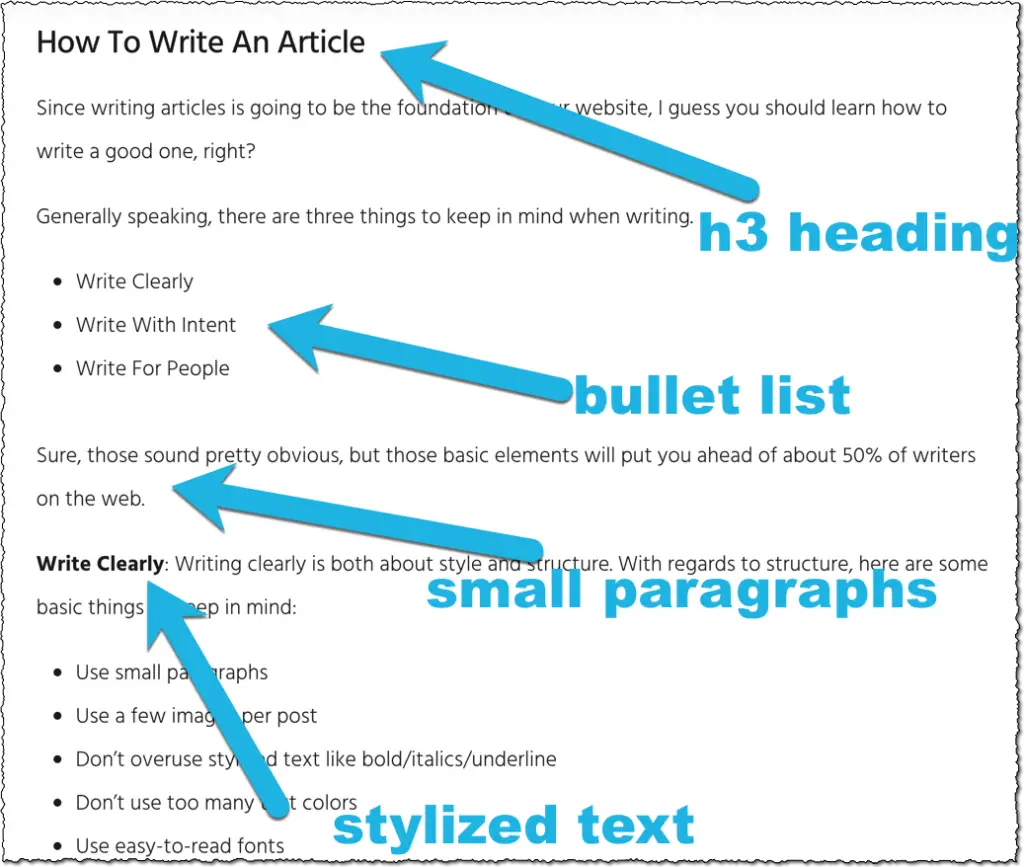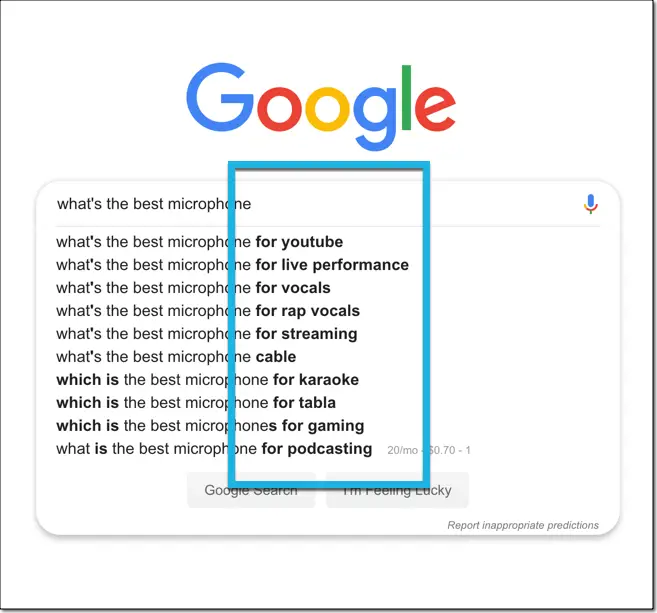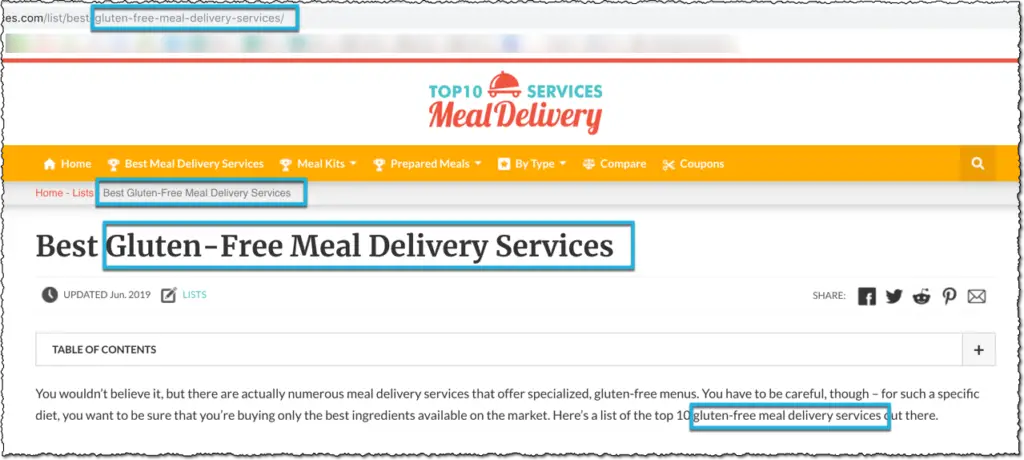Now that your website is set up, it’s time to start creating and publishing content. Content could be anything from writing articles, to uploading a video to YouTube, or even social media posts on Instagram or Twitter.
Creating content is how we get people to our website, and there are many ways to get that job done.
My personal favorite, and the easiest for new affiliate entrepreneurs to start doing is writing articles on their website.
Why is this the best way for beginners to start?
- It’s free
- Everyone can write
- Practicing is easy
In short, it’s fast, free, and easy to start getting traffic to your website by simply publishing articles to your blog.
You already have the basic skills to get this done, and with a few small tweaks (explained below), you can have a successful website without doing anything else at all.
I have seen plenty of examples of people generating $5,000-$10,000 per month with a simple website and no fancy tools. It’s absolutely possible.
This is the foundation to making money with your website, so strap in.

Basic Search Engine Optimization For Your Affiliate Website
Search Engine Optimization sounds fancy, but it basically just means that you want search engines (like Google) to be able to find articles on your website easily.
You are optimizing your content to get found in search engines.
There are both simple and advanced ways of doing this. The good news is that the simple ways will get you 90% there. Don’t worry about the advanced stuff right now. Let’s start making money first.
On this page you are going to learn how to write an article that gets ranked in search engines for a specific phrase.
- How To Write An Article
- What Are Keywords?
- Image & Video SEO
- 3 Article Formats That Are Easy To Write & Rank
- Top 10 Lists
- Best ‘X’ for ‘Y’
- How To Tutorials
- Final Thoughts
How To Write An Article
Since writing articles is going to be the foundation to your website, I guess you should learn how to write a good one, right?
General Online Writing Tips
Generally speaking, there are three things to keep in mind when writing.
- Write Clearly
- Write With Intent
- Write For People
Sure, those sound pretty obvious, but those basic elements will put you ahead of about 50% of writers on the web.
Write Clearly: Writing clearly is both about style and structure. With regards to structure, here are some basic things to keep in mind:
- Use small paragraphs
- Use a few images per post
- Don’t overuse stylized text like bold/italics/underline
- Don’t use too many text colors
- Use easy-to-read fonts
- Larger fonts are better than smaller fonts
- Use headings (h2, h3, h4)
- Use things like bullet lists or content boxes to break up text

Style is a bit more subjective. I recommend re-reading your article before publishing. You’ll find a lot of grammar and spelling mistakes, but it also gives you a chance to double check your sentences make sense.
It’s real easy to ramble, get off track, or include stuff that isn’t necessary to make your point.
Speaking of making a point…
Write With Intent: Learning how to write with intent is important. There are two things to consider here.
First, every article you publish on your website needs a reason why it exists. Why did you write it? Potential reasons could be:
- I want to rank on page 1 in Google
- I want to share it with my social media followers
- I want to drive traffic to another page on my site
- I want get affiliate sales on this specific page
The other side of intent is simply focus on a single, specific topic. I’ll cover keywords below, but the general idea is that you want one focus-topic per article.
You wouldn’t write an article called “how to create smokey eye shadow”, then talk about what you had for breakfast. If you’ve ever looked up a recipe online, you know how annoying it is that they write 1,000 words about their weekend trip before you get to the actual recipe.
Pick a topic, and make sure you stay on point.
If you write an article on How To Make Essential Oils At Home, you don’t want to also include information about how to make a homemade oil diffuser. That should be a separate article (you can link them together).
Write For People: This element is twofold. One, you need to be writing for people, not search engines. It’s really easy to over-optimize your website. Not only is over-optimization a negative ranking signal for Google, it also discourages real humans from trusting your website.
You know how much you hate when robots call your phone? It’s the same thing when people read garbage articles online.
The second thing is that you should include a human element to your writing. I mean, don’t be afraid to be yourself and let your personality shine.
There’s almost 8 billion people on the planet. You just need a couple thousand to like your style. Don’t be shy about your opinions, because I guarantee there’s a large group of people out there who would love to be part of your “tribe” online.
Article Structure
I’ll dig into three successful article formats below, but if you are struggling to write and publish your first articles, there’s a simple structure that’s easy to remember.
It’s called a 5-paragraph essay, and it’s super simple to hit the 1,000 – 1,500 word count recommended for ranking.
- Introduction (200 words)
- Introduce Topic 1
- Introduce Topic 2
- Introduce Topic 3
- Topic 1 Expanded (300 words)
- Topic 2 Expanded (300 words)
- Topic 3 Expanded (300 words)
- Conclusion (200 words)
That’ll give you 1200 words for your article. Here’s an example:
- Introduction: What is the keto diet?
- Introduce Topic 1: Focus on fats
- Introduce Topic 2: Cut carbs
- Introduce Topic 3: What is ketosis
- Topic 1 Expanded (300 words)
- Does fat make you fat?
- What is healthy fat vs unhealthy fat?
- Why is fat important for keto?
- Topic 2 Expanded (300 words)
- What are carbs you should avoid?
- Why are carbs bad for you?
- Top carb replacements like zucchini noodles or miracle rice
- Topic 3 Expanded (300 words)
- What is ketosis exactly?
- How to get into ketosis?
- Do exogenous ketones work?
- Recommended products to get you into ketosis
- *Note: This is a great opportunity for an affiliate link!
- Conclusion (200 words)
- Is the keto diet healthy?
- Do people lose weight on keto?
- How to know if the keto diet is right for you
There’s an article outline right there, and you can reuse that for every single thing you publish. You can mix it up with 5 subtopics, or go with two main topics, and 10 subtopics.
This is a very versatile article structure, and writing out an outline like this does a great job of keeping you focused on a specific topic.
What Are Keywords?
Think of keywords as the “main idea” or “focus point” of an article. In the first lesson, you chose a topic for your website, but each article will be about a sub-topic – something people search for in relation to whatever your affiliate site is about.
For example, if your website is about “Reducing Allergens In The Home”, then potential sub-topics (keywords) could be:
- how to change an air filter
- top 3 air purifiers 2019
- best otc allergy relief medication
There are lots of tools out there to help you with keyword research, but I’m not going to recommend any of them right now.
Why?
You don’t need them.
Sure, they can help you, and in another post, I’ll tell you all about them. For now, we’re just doing the basics though.
One easy way to find excellent keywords is just to go to Google and use the autocomplete feature.
Type in a phrase, and let Google finish it.

Using the image above, here are some potential keywords to use for a microphone review website, or audio editing tutorial website:
- best microphone youtube
- best microphone live performance
- best microphone rap vocals
- best microphone streaming
- best microphone karaoke
- best microphone gaming
- best microphone podcasting
IMPORTANT! Always use proper grammar. If a keyword looks wonky, get the closest version that uses the correct spelling and and grammar.
How To Use Keywords Effectively
There’s a lot of misinformation online about how to use keywords effectively so you can get your content ranked in search engines. Most of the “rules” you hear are some things that works some times, not something that works all the time.
That being said, there are a few basic tactics which are highly effective, most of the time.
- Keyword in the title (h1)
- Keyword in the URL
- Keyword in h2 & h3
- Keyword in the first paragraph
- Keywords in multimedia (images, video, meta data)

There are many more known, and unknown ranking factors which come into play, but these a solid foundation to get you started.
Image & Video SEO
Optimizing images and video is very similar to optimizing your written content. Focus on one keyword, but use common sense so humans can easily consume it.
For example, when uploading a video to YouTube:
- keyword in the video file name
- keyword in the title
- keyword in the description
- keyword in the video tag section
To optimize your images for your target phrase:
- keyword in the image file name
- keyword in the image title
- describe the picture accurately (alternative text for visually impaired)
When your articles include images and video that are also optimized for your target keyword, this also helps your page rank for that phrase.
3 Article Formats That Are Easy To Write & Rank
Top 10 Lists
Writing a top 10 list is one of the easiest ways for a new affiliate marketer to get started publishing articles. They are fun to research, easy to write, and very effective for getting clicks.
With ten items in a list, and just 100 words talking about each item, you have a 1,000 word article instantly. Plus an introduction and conclusion, you’re now burning through 1500 words in a day.
Plus, you can add one image per item in the list, and even embed a relevant video from YouTube.
These are great to share on social media, and get lots of attention in search engines.
- Introduction (200 words)
- Item 1 Title (h3)
- Item 1 Image
- Item 1 Text (100 words)
- Repeat For Items 2-10
- Video
- Conclusion (200 words)
Best ‘X’ For ‘Y’
This is a great mix-n-match method for generating hundreds of articles for your website. The best example I know is hair care. Here’s how it works.
Hair Products: shampoo, conditioner, hydrator, curler, straightener
Hair Types: oily, dry, curly, frizzy, red, blond, black, thinning
Now mix and match for article titles!
- Best Shampoo For Curly Hair
- Best Shampoo For Red Hair
- Best Shampoo For Oily Hair
- Best Shampoo For Thinning Hair
- etc…
- Best Conditioner For Curly Hair
- Best Conditioner For Red Hair
- Best Conditioner For Oily Hair
- Best Conditioner For Thinning Hair
- etc…
The content of this type of article could be similar to a top 10 list, where you discuss a few of the best options from different brands. Alternatively, you could cover the criteria of what makes something “the best”, then chose a #1 product to recommend.
How-To Tutorials
Guides and tutorials may require more elbow grease to get done right, but it really depends on your expertise and resources available.
I can do a how-to guide on digital marketing related stuff because this is my job and I have a computer to produce the tutorials right at home. If your niche is fence building, you’ve got to get out and build a fence, then come in, upload photos, edit video, and write content.
It could take hours!
Well, that’s just how it goes. The good news is that the more in-depth a tutorial is, the fewer the people who are willing to follow through and get it done. A high barrier to entry means lower competition.
The better news is that if you do it right the first time (high quality), then you never have to redo it. There are videos and articles from 10 years back that still make me money to this day.
…and so you discovered one of the very cool things about affiliate marketing. There are a lot of opportunities for passive income.
Final Thoughts
What you read on this page is legitimately the foundation of how I generate $20,000 per month with my websites. No kidding.
What trips people up most is not even getting started.
When I built my first website, is was total garbage. It was so bad, it was cringey. But you know what? I got it done, and I improved over time.
Learning how to write is like learning an instrument. The first time you pick up a guitar, you are going to suck. Practice daily, and you’ll get better. This is not a secret.
And guess what. You already know how to write! You do it every day texting, posting on Facebook, and writing emails. You just need to practice organizing your thoughts into a keyword-focused article, and you’re good to go.
If you enjoy writing, you are two steps ahead everyone else right now. Congrats!
